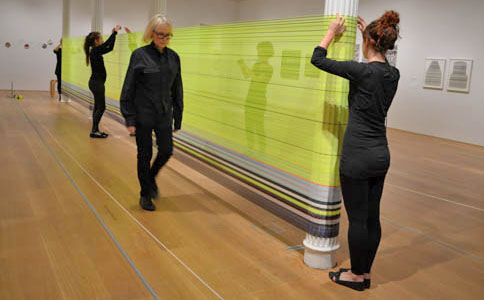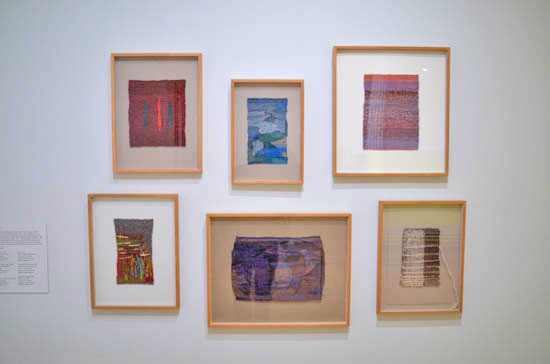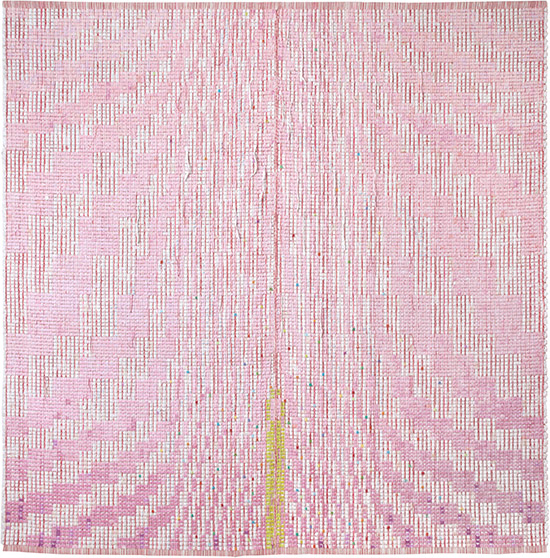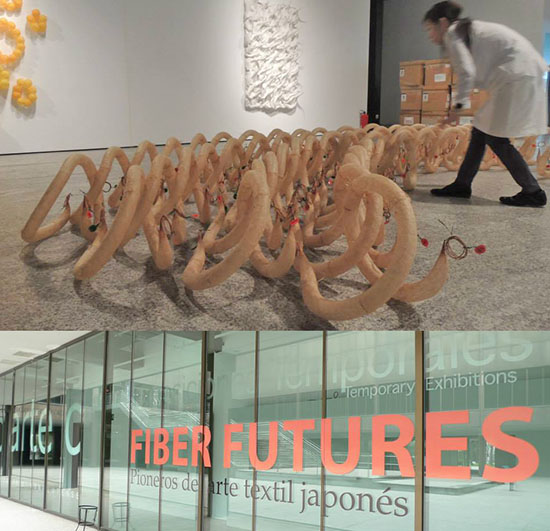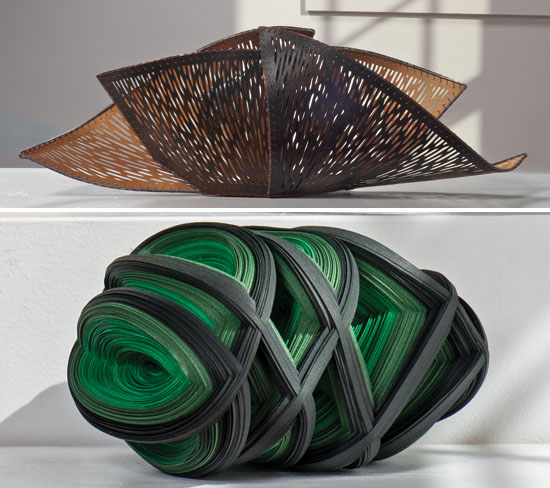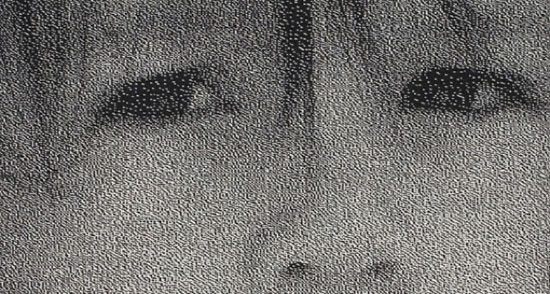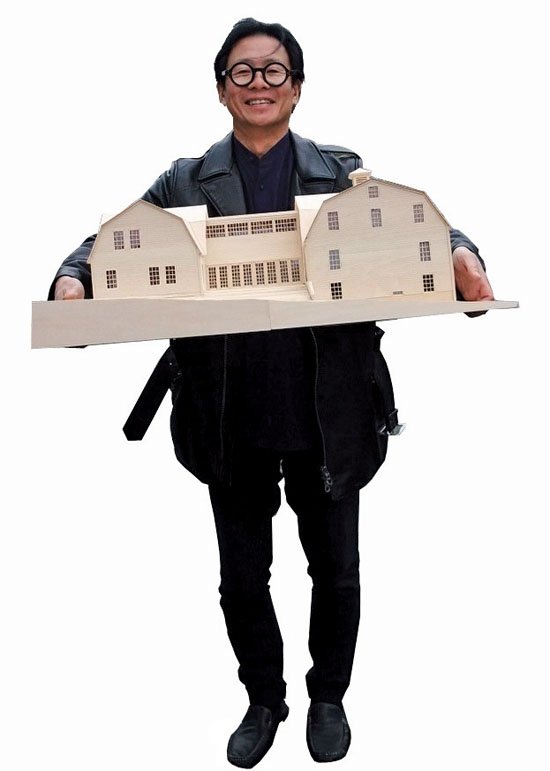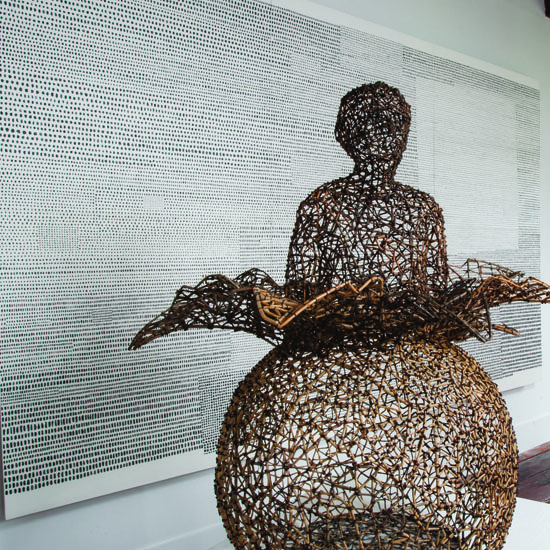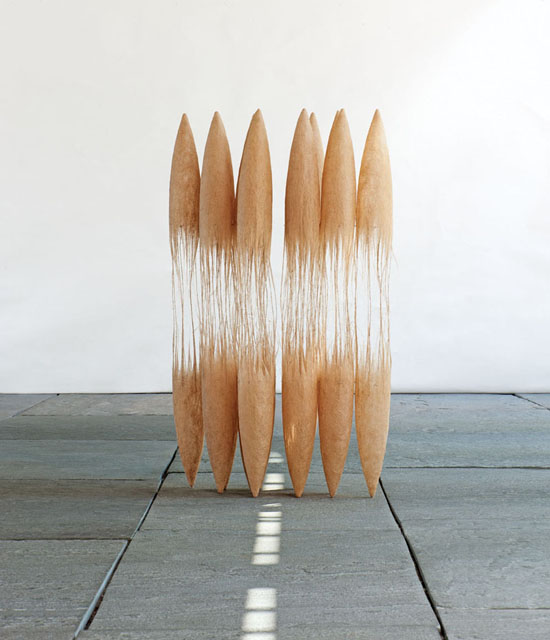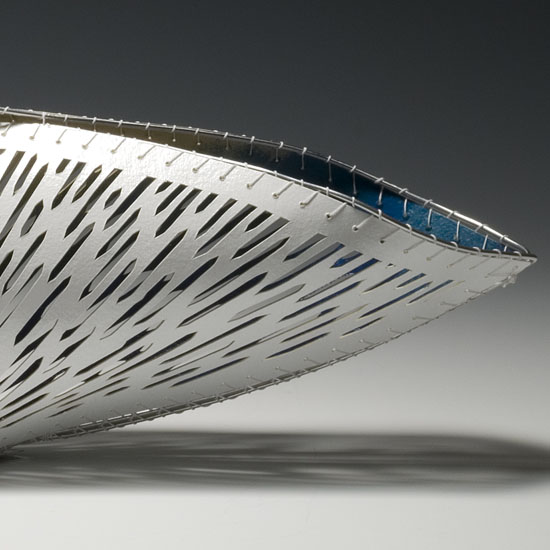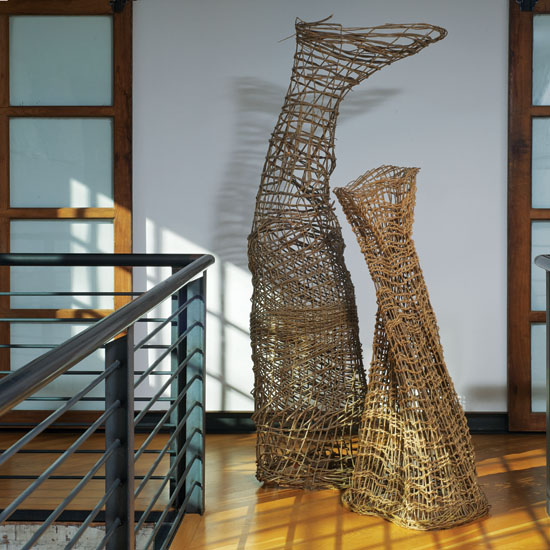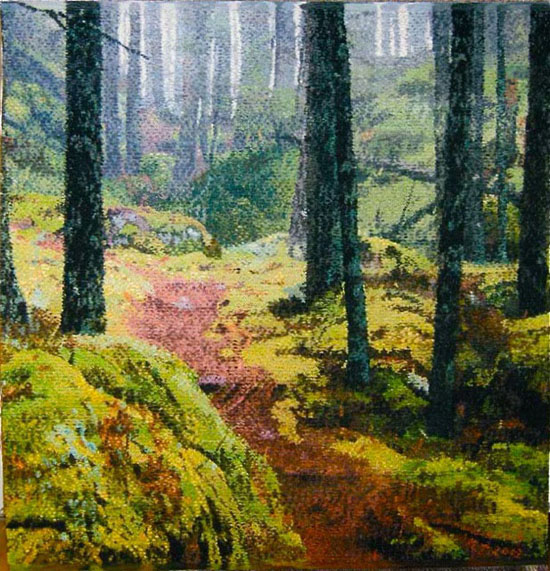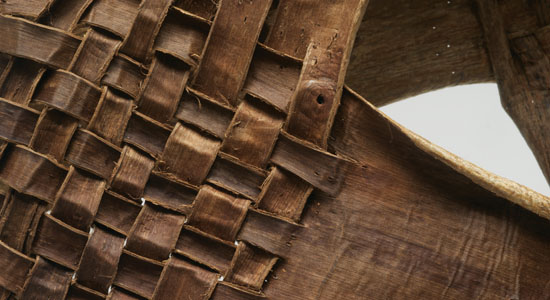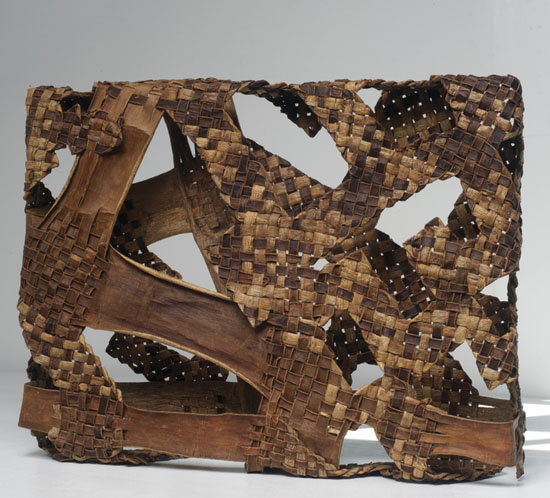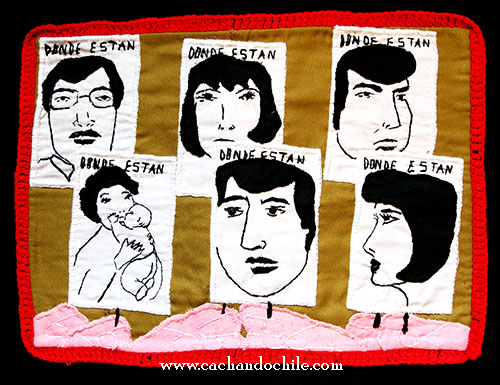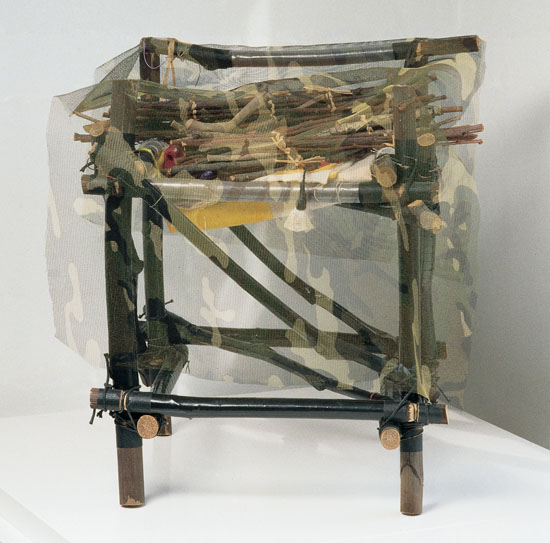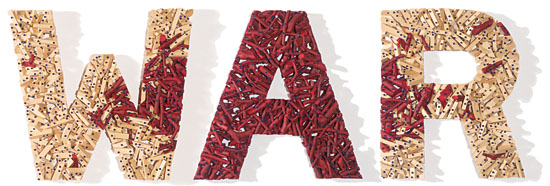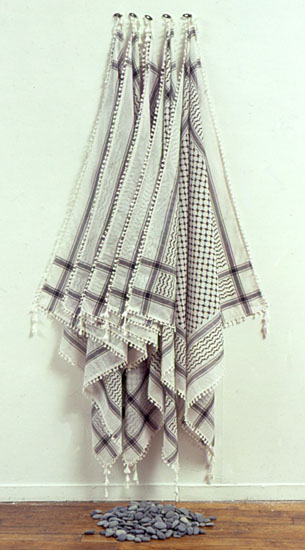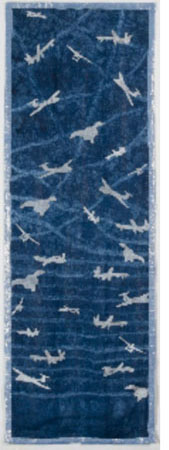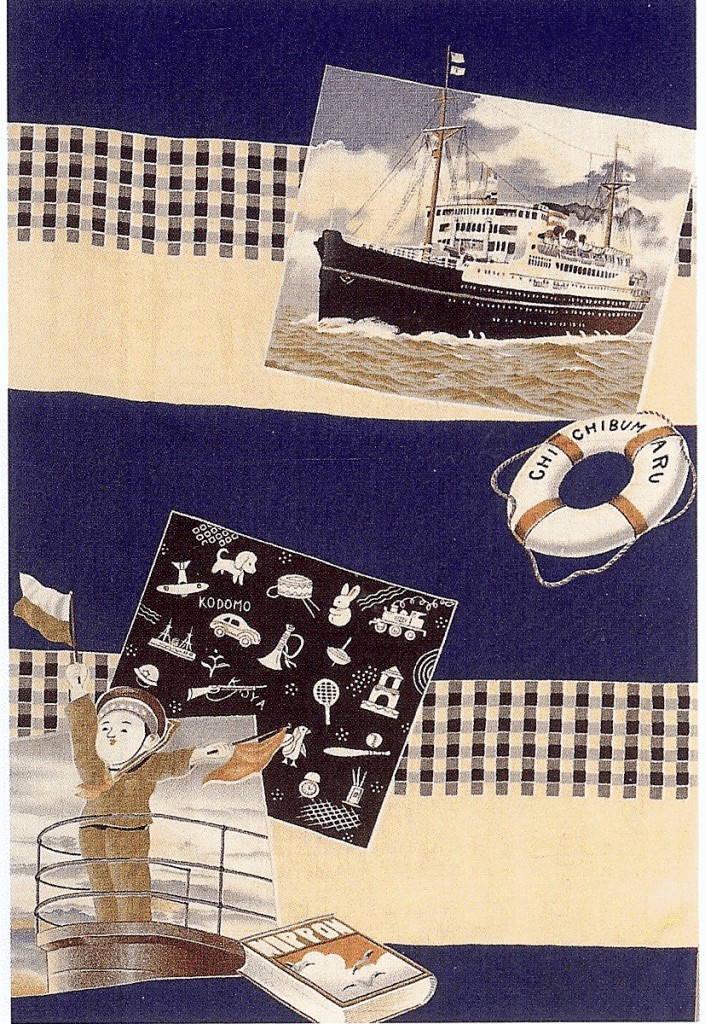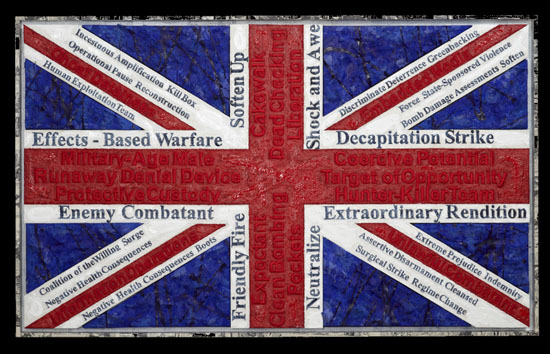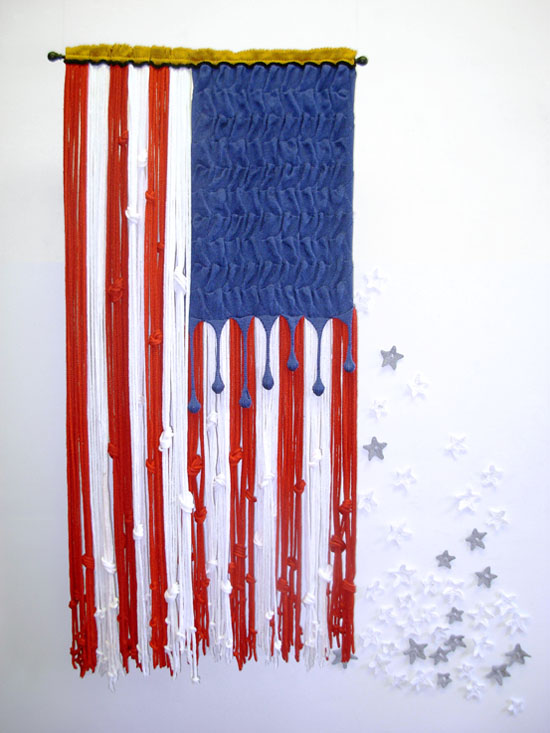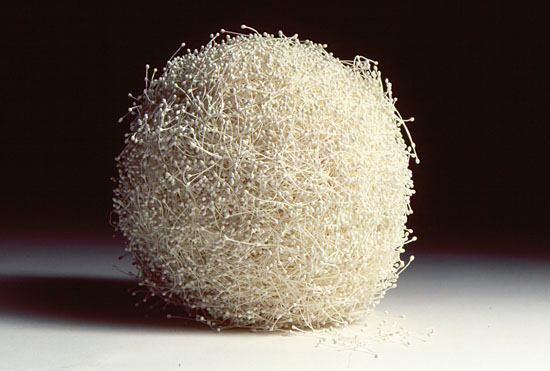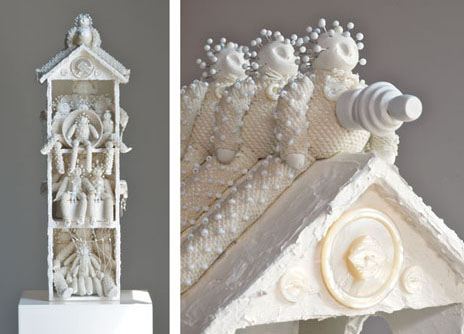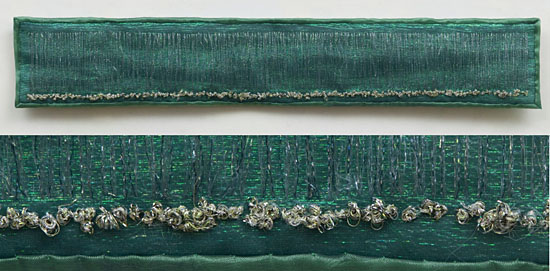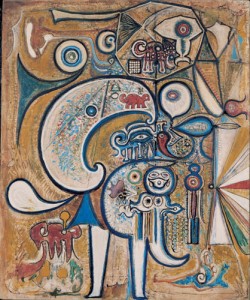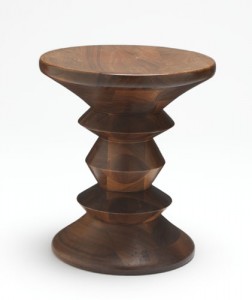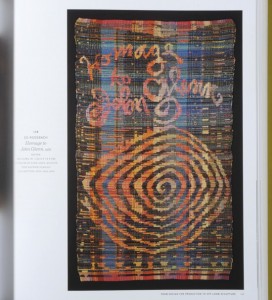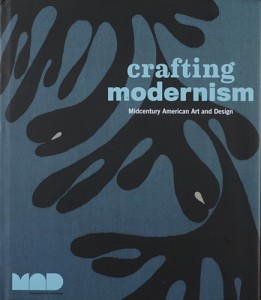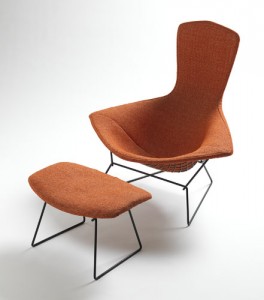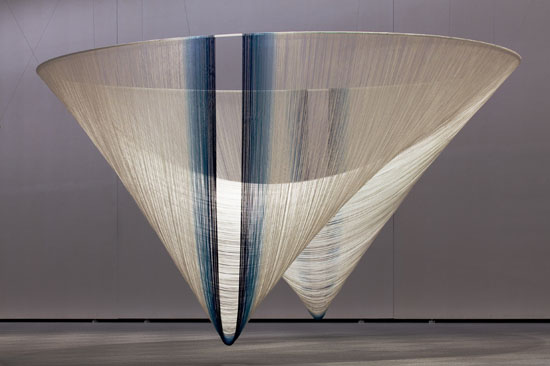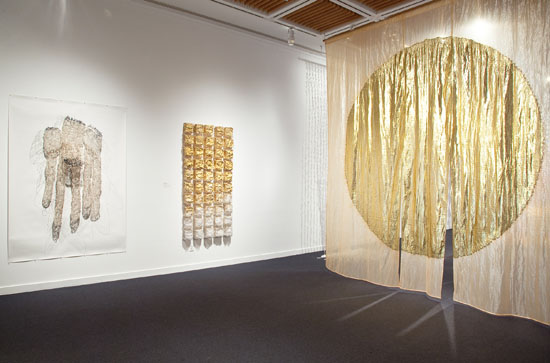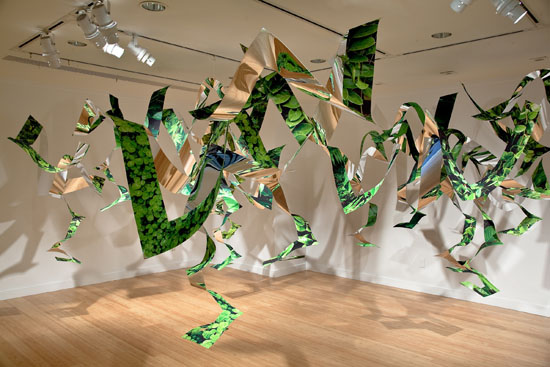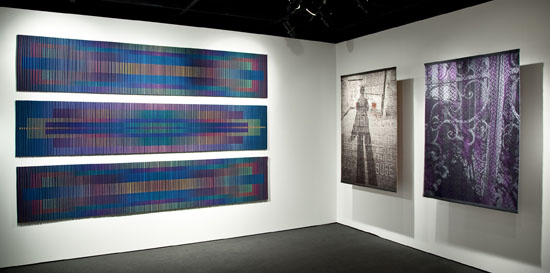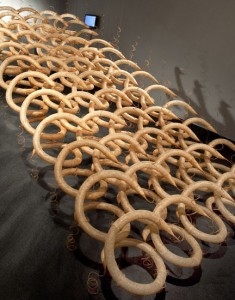We watched one of the Anne Wilson’s mesmerizing weaving in situ performances at The Drawing Center on Thursday. Titled To Cross (Walking New York), the performance was conceived when Ms. Wilson discovered that The Drawing Center’s SoHo building was originally built in 1866 for the Positive Motion Loom Company. In it, the artist uses the main gallery’s four central columns as a weaving loom. Four participants walk around the 12-foot columns, carrying a spool of thread to form a standard weaving cross (a method used to keep warp threads in order). The effect is meditative as the walker/weavers slowly move in a deliberate pattern and ethereal as shadowy figures are viewed through the threads of the work in progress. When concluded, the result will be a 5- x 34-foot foot sculpture: a colorful cross composed of innumerable strands of thread. There are three performances remaining: Sunday, October 26th, 12:30-5:30 p.m.; Saturday, November 1st, 12:30-5:30 p.m. and Sunday, November 2nd, 12:30-5:30 p.m. Find more information on those at: http://www.drawingcenter.org/en/drawingcenter/20/events/21/public-programs/879/Anne_Wilson_Performance/. If you can’t get to The Drawing Center for one of the performances, there’s a vimeo, http://thebottomline.drawingcenter.org/2014/09/30/anne-wilson-to-cross-walking-new-york-2014/, but by all means, go and see the exhibition, Thread Lines, as it is well worth a trip.
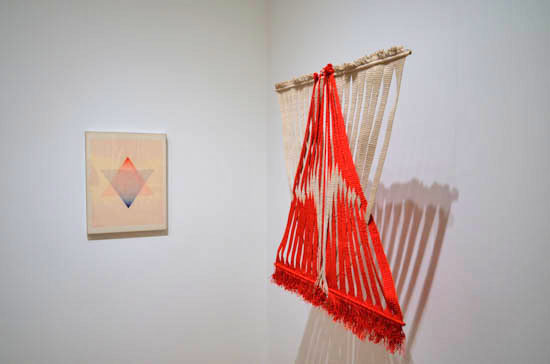
Lenore Tawney Drawing Center installation, UNION OF WATER AND FIRE linen weaving and pen and ink drawing. Photo by Tom Grotta
On display through December 14, 2014, the exhibition contains a thoughtful combination of works by 16 artists who engage in sewing, knitting and weaving to create works that “activate the expressive and conceptual potential of line and illuminate affinities between the mediums of textile and drawing.” As the catalog essay by curator, Jessica Kleinberg Romanow, explains, the exhibition joins the pioneers, including Lenore Tawney, Sheila Hicks and Louis Bourgeois, “who first unraveled the distinction between textile and art” and “a ‘new wave’ of younger practitioners who have inherited and have expanded upon their groundbreaking gestures.”
The combination, wrote Karen Rosenberg in The New York Times, http://www.nytimes.com/2014/10/17/arts/design/thread-lines.html?ref=design&_r=0, “sets up some smart intergenerational conversations.” The Drawing Center is in Soho at 35 Wooster, New York, New York; 212.219.2166; info@drawingcenter.org; http://www.drawingcenter.org.

